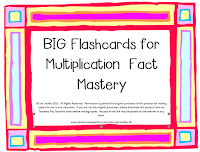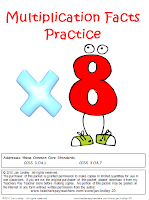One of the key shifts in Common Core standards is
an emphasis on academic vocabulary.
These are words that are used in the classroom, in textbooks, and on
assessments. Understanding academic
language is essential to student success.
Academic vocabulary needs to be taught explicitly. It is not likely to be acquired through
students’ independent reading or incidental classroom exposure.
Vocabulary words can be divided into three
tiers. Tier 1 words appear frequently in
spoken language. They are commonly used
in various contexts, not just in classroom or educational settings. They rarely require explicit instruction. These
would be words like clock, house, or walking.
Tier 2 words are used less commonly, and are likely
to appear more often in written text than in spoken language. These words are generalized, and used in many
different contexts. They are often more
precise ways to say rather simple things. They are essential to understanding,
and need to be taught explicitly. Examples
of these words are: conclude, define, and dialogue.
Tier 3 words are highly specialized, and domain-specific. They are not generalized, or used widely.
These words must be explicitly taught. Tier three word examples are: isotope, tectonic
plates, phoneme
Here is a suggested procedure for teaching academic
vocabulary:
1. Introduce the word by
providing a description, explanation, or example in student-friendly
terms. Do not use dictionary definitions
when introducing the word. Write the
word for students to see. Have students
repeat the word, and spell it orally.
Provide several opportunities for students to read and say the word.
2. Have students explain the
term in their own words and let them share examples, synonyms, or uses of the
word.
3. Have students represent
the word in graphic or picture form.
4. Working with partners or
in small groups, have students discuss their ideas and understanding of the
word.
5. Provide opportunities for
the word to be used in context. Teach a
word when it will be incorporated into the lesson activities. For example, teach the word develop
when students will be working on writing assignments and can be encouraged to develop
their ideas and add more information.
6. Be sure to teach other
forms of the word. For example, when
students learn conclusion (a noun), they should also learn conclude (a verb).
7. Review and revisit the words after they have been taught. Use the terms frequently during instruction
in all subjects.
I have new academic vocabulary packet in my Teachers Pay Teachers store. It has page-size posters for 48 academic vocabulary terms that are taken directly from Common Core standards. I purposes chose words that were not tied to one domain, but are very general and are useful in any subject area. You can find it here:




















